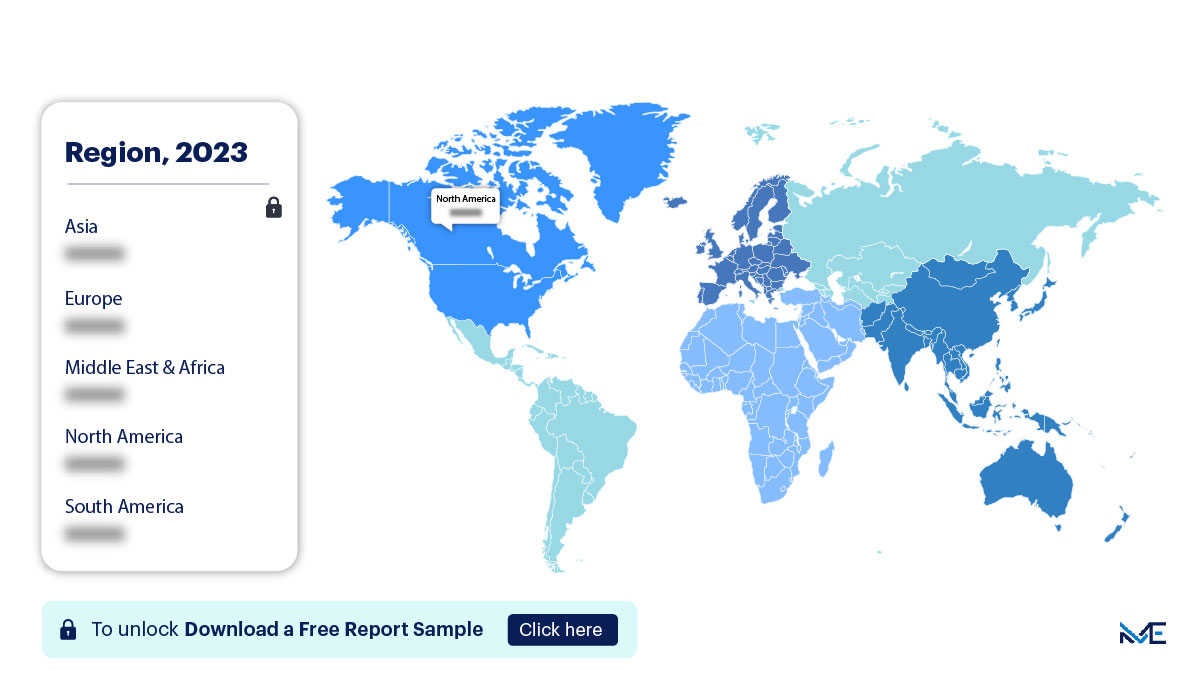Market Snapshot
| Study Period | 2019-2032 |
| Base Year | 2023 |
| Forcast Year | 2023-2032 |
| CAGR | 9.58 |


Gain accurate insights regarding the negative impacts of COVID-19 on all markets and industries
Download Sample PdfReport Overview
The Payment Monitoring Market size is estimated to grow at a CAGR of 6.75% between 2022 and 2032. The market size is forecast to increase by USD 14,896.32 million. The growth of the market depends on several factors, including the rise in online transactions, increasing regulatory compliance requirements, and the need for fraud detection and prevention. Payment monitoring refers to the process of tracking and analyzing financial transactions to ensure security, compliance, and efficient payment processing. It plays a crucial role in detecting and preventing fraudulent activities, ensuring adherence to regulatory standards, and optimizing payment operations.
Payment Monitoring Market Overview:
Drivers:
One of the key drivers of the payment monitoring market growth is the rapid growth of online transactions. With the increasing adoption of digital payment methods, e-commerce, and online banking, there is a significant surge in the volume and complexity of financial transactions. This growth has amplified the need for robust payment monitoring solutions to safeguard against fraud, money laundering, and other financial crimes.
Moreover, regulatory compliance requirements are becoming more stringent, especially in the financial services sector. Payment monitoring solutions help organizations meet these compliance standards by tracking and reporting on suspicious activities, ensuring transparency, and mitigating legal and financial risks.
Trends:
A key trend shaping the payment monitoring market growth is the integration of artificial intelligence (AI) and machine learning (ML) technologies. AI and ML algorithms can analyze vast amounts of transaction data in real-time, identify anomalies, and predict potential fraudulent activities. These technologies also enable organizations to automate routine monitoring tasks, reduce false positives, and enhance the accuracy and efficiency of payment monitoring.
Additionally, the rise of real-time payment systems and instant payment platforms is driving the demand for advanced monitoring solutions. As transactions occur at lightning speed, payment monitoring systems must keep pace, providing real-time alerts and analysis to detect and prevent fraudulent activities immediately.
Restraints:
One of the key challenges in the payment monitoring market is the complexity of financial ecosystems. With the globalization of financial services, transactions often involve multiple parties, currencies, and payment methods. Managing and monitoring such complex ecosystems can be daunting, and organizations may struggle to implement unified payment monitoring solutions that cover all aspects of their operations.
Furthermore, privacy concerns and data protection regulations, such as GDPR in Europe, present challenges for payment monitoring. Balancing the need for thorough transaction monitoring with strict data privacy requirements can be a delicate task.
Payment Monitoring Market Segmentation By Application:
The e-commerce segment is estimated to witness significant growth during the forecast period. E-commerce platforms handle a vast number of online transactions daily, making them prime targets for fraudsters. Payment monitoring solutions in the e-commerce sector play a critical role in identifying and preventing fraudulent activities, including unauthorized card usage, account takeovers, and fake orders.
The financial services segment is another important application area for payment monitoring. Banks, financial institutions, and payment processors require robust payment monitoring systems to comply with regulations, monitor money laundering activities, and prevent fraudulent transactions.
Payment Monitoring Market Segmentation By Solution Type:
The fraud detection and prevention solution segment is experiencing significant growth as organizations seek to protect their financial transactions from fraudulent activities. These solutions employ advanced algorithms and pattern recognition techniques to identify suspicious transactions, assess risk, and take immediate action to prevent financial losses.
Regulatory compliance management solutions are also in high demand, particularly in the financial sector. These solutions assist organizations in adhering to complex regulatory frameworks by automating compliance monitoring, generating reports, and maintaining audit trails.
Regional Overview:

Download the report summary now!
Request pdf Sample
North America is estimated to contribute significantly to the growth of the global payment monitoring market during the forecast period. The region has a well-established financial sector, including banking and fintech companies, which are early adopters of payment monitoring solutions. Additionally, the stringent regulatory environment in North America, including anti-money laundering (AML) and know your customer (KYC) requirements, drives the demand for robust payment monitoring systems.
In Europe, the adoption of payment monitoring solutions is also on the rise due to GDPR and other data protection regulations. European financial institutions and e-commerce platforms prioritize compliance and security, fostering the growth of the payment monitoring market.
The Asia-Pacific (APAC) region, with its expanding e-commerce market and digital payment adoption, represents a significant growth opportunity. Countries like China and India are experiencing a surge in online transactions, leading to increased demand for payment monitoring solutions.
Payment Monitoring Market Customer Landscape:
The payment monitoring market industry report includes an analysis of the adoption lifecycle, from early adopters to laggards, and provides insights into the factors influencing purchasing decisions. It also explores key purchase criteria and factors affecting price sensitivity to help companies develop effective growth strategies.
Major Payment Monitoring Market Companies: Companies in the payment monitoring market are implementing various strategies to expand their presence and enhance payment security.
- IBM Corporation: IBM offers payment monitoring solutions that leverage AI and analytics to detect and prevent fraudulent activities in real-time.
- Fiserv Inc.: Fiserv provides comprehensive payment monitoring and fraud prevention solutions for financial institutions, payment processors, and e-commerce businesses.
- NICE Actimize: NICE Actimize specializes in financial crime prevention and offers advanced payment monitoring and fraud detection solutions.
- ACI Worldwide: ACI Worldwide offers a range of payment solutions, including real-time payment monitoring and fraud prevention tools.
- SAS Institute Inc.: SAS Institute provides AI-driven analytics and payment monitoring solutions to help organizations detect and prevent fraud and compliance violations.
- FICO (Fair Isaac Corporation): FICO delivers analytics and decision management solutions, including payment monitoring and fraud detection systems.
The competitive landscape of the market includes these companies and others, each contributing to the evolution of payment monitoring solutions.
Segment Overview:
The payment monitoring market report provides revenue forecasts at global, regional, and country levels, along with an analysis of emerging trends and growth opportunities from 2019 to 2032.
- Application Outlook (USD Million, 2019 - 2032)
- E-commerce
- Financial Services
- Healthcare
- Retail
- Others
- Solution Type Outlook (USD Million, 2019 - 2032)
- Fraud Detection and Prevention
- Regulatory Compliance Management
- Transaction Monitoring
- Others
- Geography Outlook (USD Million, 2019 - 2032)
- North America
- The U.S.
- Canada
- Europe
- U.K.
- Germany
- France
- Rest of Europe
- APAC
- China
- India
- South America
- Brazil
- Argentina
- Chile
- Middle East & Africa
- Saudi Arabia
- South Africa
- Rest of the Middle East & Africa
RESEARCH METHODOLOGY
A research methodology is a systematic approach for assessing or conducting a market study. Researchers tend to draw on a variety of both qualitative and quantitative study methods, inclusive of investigations, survey, secondary data and market observation.
Such plans can focus on classifying the products offered by leading market players or simply use statistical models to interpret observations or test hypotheses. While some methods aim for a detailed description of the factors behind an observation, others present the context of the current market scenario.
Now let’s take a closer look at the research methods here.
Secondary Research Model
Extensive data is obtained and cumulated on a substantial basis during the inception phase of the research process. The data accumulated is consistently filtered through validation from the in-house database, paid sources as well reputable industry magazines. A robust research study requires an understanding of the overall value chain. Annual reports and financials of industry players are studied thoroughly to have a comprehensive idea of the market taxonomy.
Primary Insights
Post conglomeration of the data obtained through secondary research; a validation process is initiated to verify the numbers or figures. This process is usually performed by having a detailed discussion with the industry experts.
However, we do not restrict our primary interviews only to the industry leaders. Our team covers the entire value chain while verifying the data. A significant number of raw material suppliers, local manufacturers, distributors, and stakeholders are interviewed to make our findings authentic. The current trends which include the drivers, restraints, and opportunities are also derived through the primary research process.
Market Estimation
The market estimation is conducted by analyzing the data collected through both secondary and primary research. This process involves market breakdown, bottom-up and top- down approach.
Moreover, while forecasting the market a comprehensive statistical time series model is designed for each market. Macroeconomic indicators are considered to understand the current trends of the market. Each data point is verified by the process of data triangulation method to arrive at the final market estimates.
Final Presentation
The penultimate process results in a holistic research report. The study equips key industry players to undertake significant strategic decisions through the findings. The report encompasses detailed market information. Graphical representations of the current market trends are also made available in order to make the study highly comprehensible for the reader.
Personalized Business Report Tailored to Your Requirements
- Our expert analysts collaborate directly with you to comprehend your specific needs.
- Get data on regions, segments, competitors, and vendors of your choice.
- Information is presented in alignment with your exact preferences and formatting.
Free Sample Report
"Find new revenue generation opportunities"

